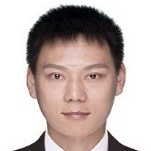Hydraulic Engineering and Modelling: Numerical Modelling and Simulation
A special issue of Water (ISSN 2073-4441). This special issue belongs to the section "Hydraulics and Hydrodynamics".
Deadline for manuscript submissions: closed (30 September 2023) | Viewed by 14318
Special Issue Editors
Interests: hydrology; subsurface flow; fracture; THM coupling; numerical simulation
Interests: subsurface hydrology; rock mechanics; coupled THMC processes; advanced materials & manufacturing; reservoir processes and engineering
Special Issues, Collections and Topics in MDPI journals
Interests: subsurface flow; fracture network; THC coupling; multiphysics rock experiment; numerical simulation
Special Issues, Collections and Topics in MDPI journals
Special Issue Information
Dear Colleagues,
Due to the evolution of geostress, hydrological environments and engineering disturbances, the hydrodynamic process in geomaterials becomes inhomogeneous, anisotropic, nonlinear and time-dependent, impacting the stability and seepage control of reservoir–dam systems. Numerical modelling and simulation are essential ways of investigating the subsurface flow in reservoir–dam systems subjected to stress, temperature changes, solute transport, etc.
We invite authors to contribute original research and review papers illustrating and stimulating the continuing effort undertaken in the numerical modelling and simulation of hydraulic engineering. Potential topics include, but are not limited to:
- The reconstruction of geomaterials;
- The mechanics of subsurface fluid flow;
- Thermal-hydro-mechanical coupling in geomaterials;
- Multiphase flow fundamentals in geomaterials;
- The evolution process of seepage-induced problems;
- Solute transport in geomaterials.
Dr. Zuyang Ye
Dr. Chun Chang
Dr. Feng Xiong
Guest Editors
Manuscript Submission Information
Manuscripts should be submitted online at www.mdpi.com by registering and logging in to this website. Once you are registered, click here to go to the submission form. Manuscripts can be submitted until the deadline. All submissions that pass pre-check are peer-reviewed. Accepted papers will be published continuously in the journal (as soon as accepted) and will be listed together on the special issue website. Research articles, review articles as well as short communications are invited. For planned papers, a title and short abstract (about 100 words) can be sent to the Editorial Office for announcement on this website.
Submitted manuscripts should not have been published previously, nor be under consideration for publication elsewhere (except conference proceedings papers). All manuscripts are thoroughly refereed through a single-blind peer-review process. A guide for authors and other relevant information for submission of manuscripts is available on the Instructions for Authors page. Water is an international peer-reviewed open access semimonthly journal published by MDPI.
Please visit the Instructions for Authors page before submitting a manuscript. The Article Processing Charge (APC) for publication in this open access journal is 2600 CHF (Swiss Francs). Submitted papers should be well formatted and use good English. Authors may use MDPI's English editing service prior to publication or during author revisions.
Keywords
- numerical simulation
- geomaterial
- fluid flow
- multifield coupling
- seepage-induced problems
- solute transport







